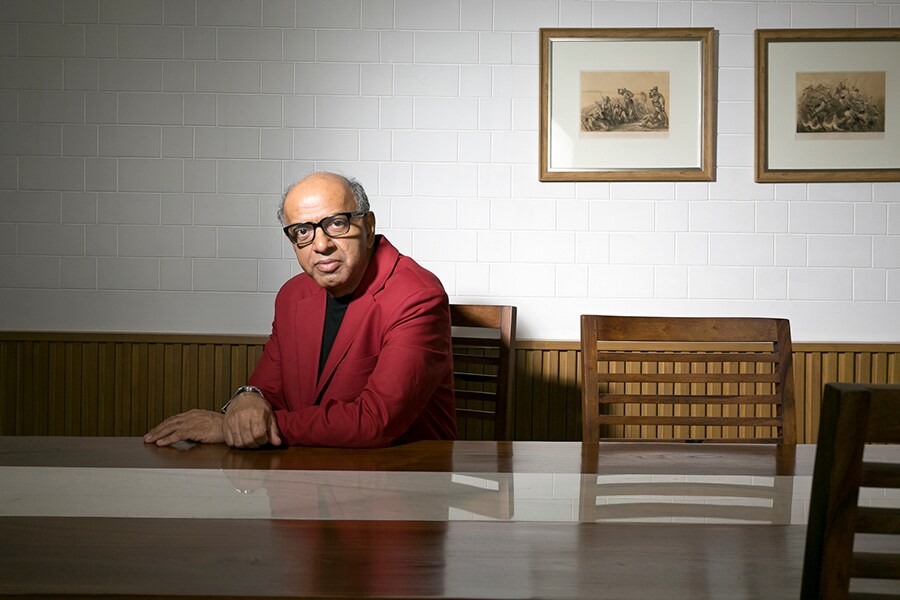
Copyright 2019, Forbesindia.com
Sanjeev Bikhchandani and the rise of Internet businesses in India
By Naini Thaker| Aug 16, 2021
Bikhchandani knew he wanted to be an entrepreneur but he had no big ideas or vision yet in 1996. How did he set up Naukri at a time when the Internet was expensive and servers were only available in the US? Charting his journey from pioneer to messiah
 Sanjeev Bikhchandani, founder and executive vice chairman of Info Edge.
Sanjeev Bikhchandani, founder and executive vice chairman of Info Edge.
Image: Madhu Kapparath[br]
By 1996, Sanjeev Bikhchandani had quit his corporate job and established Info Edge India Private Ltd where he was toying with various ideas—CAT prep classes, salary surveys, consulting, and so on. "I was extremely keen to be an entrepreneur. I had no big idea and no vision," recalls Bikhchandani.
_RSS_ The eureka moment happened when he was at an IT Expo at Pragati Maidan in New Delhi—he came across a stall with a sign ‘WWW’. He was told it stood for the ‘World Wide Web’ or the Internet. In that moment, he immediately remembered something interesting that he’d noticed while working as a product executive for Horlicks at HMM, now GlaxoSmithKline Consumer Healthcare. All his colleagues read the back pages of the Business India magazine which, at the time, used to carry job advertisements. “Very few [people] were reading articles… most of them were only reading the job ads and discussing them,” he says. “These were talented guys, who had the best job they could have had at the time. The company (HMM) had good brands and it paid well; there was no reason to be unhappy. I found this behaviour strange.” He realised soon that there were a lot of jobs in the market that weren't being advertised—what appeared in print was only the tip of the iceberg. Clearly, 'jobs' was a high interest category even for those who had one.
Ten minutes into understanding how the internet worked, Bikhchandani had his big idea—launching a job aggregation website. The idea was clear, but implementing it was a bigger challenge in the India of 1990s. Getting access to the internet back then was an expensive affair and setting up a website even tougher, since all the servers were in the US. There were only 14,000 Internet accounts in India in those days. “It might seem like a small number now, but it looked like a large number back then,” he says. Bikhchandani rented a server in the US for $25 per month and launched naukri.com in 1997. “I had done 20 small things by then… this was the 21st small thing." By 2006, Info Edge became one of the first Internet companies to be listed on the BSE and NSE.
Read all about the Internet pioneer's journey from being a budding entrepreneur to an investor—the first one for Zomato—and mentor, and now philanthropist. Subscribe to get early access to the full cover story.
